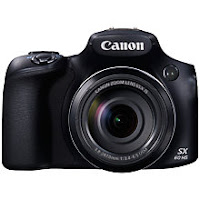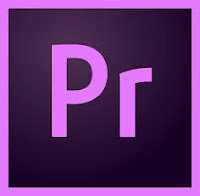Pre-Production:
 Within pre-production and the planning area or work, we created blogs which we would put all of our work onto. We use these blogs because they are interactive as well as being flexible with usage and editing. They allow for multimedia additions such as power-points, YouTube videos, and pictures.
Within pre-production and the planning area or work, we created blogs which we would put all of our work onto. We use these blogs because they are interactive as well as being flexible with usage and editing. They allow for multimedia additions such as power-points, YouTube videos, and pictures.
When researching, we watched other films and YouTube videos to help us grasp the main concept of what a thriller encapsulates. This was helpful as we were able to see what conventions there were, and how to use them- such as sounds and editing skills. As we were researching other thriller films, we used DropBox as a public share point where our teacher would upload the stills from the clips we watched so that we could easily access them and analyse them. Similarly, we used Google Drive as we were all able to access the document and edit it at the same time, making collaborative work much easier. Sites such as DaFont and FreeSound were used as they allowed us to see fonts that could be used and sounds that might work within the style of film we were making. These creatively empowering sites were copyright free for the most part, and so we were able to use any of the clips or fonts without breaking the law.
 During production, we used HD cameras which had SD cards for compact memory, as well as clear settings for zoom, and focus. There was a screed to watch back the footage and they were of high quality, making our filming run smoothly an efficiently. The camera settings gave us a variety of ways in which we could have shot our film which empowered us as amateur protectionists because we had a firm choice and had many options of which we could choose from to make our film as quirky or as neutral as we wanted it to be.
During production, we used HD cameras which had SD cards for compact memory, as well as clear settings for zoom, and focus. There was a screed to watch back the footage and they were of high quality, making our filming run smoothly an efficiently. The camera settings gave us a variety of ways in which we could have shot our film which empowered us as amateur protectionists because we had a firm choice and had many options of which we could choose from to make our film as quirky or as neutral as we wanted it to be.
For the camera, we used a personal camera that two of the crew were capable of using well- with plenty of experience. Due to this being our own camera, we did not have to worry about times to hand it back in, and we had plenty of memory due to spare memory cards we owned that were compatible with both the camera and the program we used to edit on.
 During post-production, we used a non-linear editing software called Premier Pro, which allowed us to edit in sections as well as in any order we wanted to. This software allowed us to add transitions, such as fade to black, and text on screen. It allowed us to refine and tweak the style as we went along too, as well as going back and changing things afterwards. This software allowed for us to change sound and colour of the footage which was also creatively empowering and gave a lot of control over the outcome.
During post-production, we used a non-linear editing software called Premier Pro, which allowed us to edit in sections as well as in any order we wanted to. This software allowed us to add transitions, such as fade to black, and text on screen. It allowed us to refine and tweak the style as we went along too, as well as going back and changing things afterwards. This software allowed for us to change sound and colour of the footage which was also creatively empowering and gave a lot of control over the outcome.
Also during this stage, we used FreeSound to get background music, sound clips of a ringing phone- creating the right atmosphere to fit the genre conventions of a thriller. Programs such as these are creatively empowering as they enhance the ability for originality in a piece of work. Sites and programs such as Premier Pro and FreeSound allows students like us to create an original piece based purely on imagination and on the genre chosen as FreeSound ha every sound you could need to make a film/short film.
Production:
 During production, we used HD cameras which had SD cards for compact memory, as well as clear settings for zoom, and focus. There was a screed to watch back the footage and they were of high quality, making our filming run smoothly an efficiently. The camera settings gave us a variety of ways in which we could have shot our film which empowered us as amateur protectionists because we had a firm choice and had many options of which we could choose from to make our film as quirky or as neutral as we wanted it to be.
During production, we used HD cameras which had SD cards for compact memory, as well as clear settings for zoom, and focus. There was a screed to watch back the footage and they were of high quality, making our filming run smoothly an efficiently. The camera settings gave us a variety of ways in which we could have shot our film which empowered us as amateur protectionists because we had a firm choice and had many options of which we could choose from to make our film as quirky or as neutral as we wanted it to be.For the camera, we used a personal camera that two of the crew were capable of using well- with plenty of experience. Due to this being our own camera, we did not have to worry about times to hand it back in, and we had plenty of memory due to spare memory cards we owned that were compatible with both the camera and the program we used to edit on.
Post-Production:
 During post-production, we used a non-linear editing software called Premier Pro, which allowed us to edit in sections as well as in any order we wanted to. This software allowed us to add transitions, such as fade to black, and text on screen. It allowed us to refine and tweak the style as we went along too, as well as going back and changing things afterwards. This software allowed for us to change sound and colour of the footage which was also creatively empowering and gave a lot of control over the outcome.
During post-production, we used a non-linear editing software called Premier Pro, which allowed us to edit in sections as well as in any order we wanted to. This software allowed us to add transitions, such as fade to black, and text on screen. It allowed us to refine and tweak the style as we went along too, as well as going back and changing things afterwards. This software allowed for us to change sound and colour of the footage which was also creatively empowering and gave a lot of control over the outcome.Also during this stage, we used FreeSound to get background music, sound clips of a ringing phone- creating the right atmosphere to fit the genre conventions of a thriller. Programs such as these are creatively empowering as they enhance the ability for originality in a piece of work. Sites and programs such as Premier Pro and FreeSound allows students like us to create an original piece based purely on imagination and on the genre chosen as FreeSound ha every sound you could need to make a film/short film.
No comments:
Post a Comment